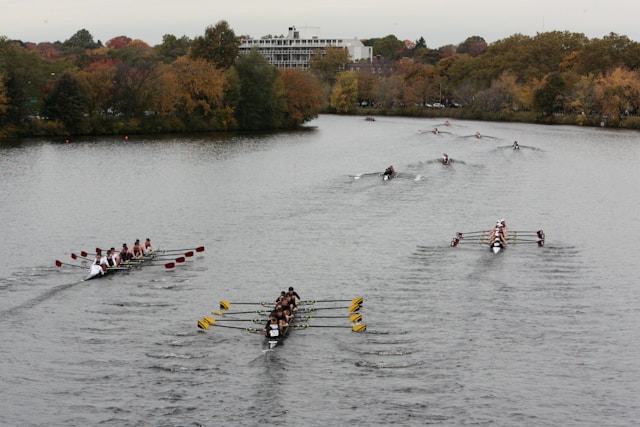Choosing the right racing paddle is crucial for any boat racer looking to maximize their performance and efficiency on the water. With a variety of materials, blade shapes, sizes, and other features available, making the right choice can be daunting. This comprehensive review will guide you through the key factors to consider when selecting the perfect racing paddle to enhance your boating experience.
1. Understanding Paddle Materials
Carbon Fiber Carbon fiber paddles are the top choice for competitive racers due to their lightweight nature and stiffness. These paddles provide excellent power transfer and reduce fatigue during long races. However, they come at a higher cost and may be less durable than other materials.
Fiberglass Fiberglass paddles offer a good balance between weight, stiffness, and cost. They are more affordable than carbon fiber paddles and still provide decent performance. Fiberglass is also durable, making it a solid choice for both beginners and experienced racers.
Wood Wooden paddles have a classic look and feel. They are heavier than carbon fiber and fiberglass paddles but offer a comfortable flex and excellent durability. Wooden paddles are often preferred for recreational racing or for those who appreciate the traditional aesthetic.
Plastic/Aluminum Paddles made from plastic or aluminum are the most affordable and durable options. They are heavier and less efficient than other materials, making them suitable for beginners or those on a budget. These paddles are ideal for casual racing and practice sessions.
2. Blade Shapes and Sizes
Blade Shape The shape of the paddle blade significantly impacts your paddling efficiency and style. Here are the common blade shapes:
- Tear-Drop Blade: Ideal for powerful, quick strokes. This shape offers a larger surface area at the bottom, allowing for maximum power in each stroke;
- Rectangular Blade: Provides consistent power throughout the stroke. This shape is versatile and suitable for various racing styles and conditions;
- Wing Blade: Designed for high-performance paddling, the wing blade shape enhances lift and propulsion. It’s commonly used in competitive racing for its efficiency.
Blade Size The size of the blade affects the amount of water you can pull with each stroke. Larger blades provide more power but require greater strength and can lead to quicker fatigue. Smaller blades are easier to handle and are suitable for longer distances or those with less upper body strength. It’s essential to find a balance that suits your paddling style and physical condition.
3. Shaft Design and Flexibility
Straight vs. Bent Shaft
- Straight Shaft: Offers a traditional feel and allows for easy hand movement along the shaft. It’s versatile and suitable for various paddling techniques;
- Bent Shaft: Features an angled design that can improve ergonomics and reduce wrist strain. Bent shafts provide more efficient strokes, particularly in high-cadence paddling.
Shaft Flexibility The flexibility of the shaft affects the paddle’s performance and comfort. Stiffer shafts offer better power transfer and are preferred by competitive racers. More flexible shafts absorb shock and reduce strain on the joints, making them suitable for long-distance races and paddlers with joint issues.
4. Paddle Length
Selecting the correct paddle length is crucial for comfort and efficiency. The ideal length depends on your height, paddling style, and the type of boat you’re using. Here’s a general guide:
- Kayak Paddles: For flatwater racing, the paddle length typically ranges from 210 to 230 cm. Shorter paddles are better for high-cadence paddling, while longer paddles provide more leverage for powerful strokes;
- Canoe Paddles: The length of a canoe paddle is usually measured from the floor to the paddler’s chin or nose. A general guideline is to subtract 6-8 inches from your height to find the correct length.
5. Customization and Adjustability
Adjustable Paddles Some paddles come with adjustable lengths and blade angles, allowing you to customize the paddle to your preferences and different racing conditions. Adjustable paddles are versatile and can be shared among different paddlers.
Customization Options Many high-end paddle manufacturers offer customization options, such as personalized grips, shaft diameters, and blade designs. Custom paddles can enhance comfort and performance by catering to your specific needs and preferences.
6. Testing and Selection Tips
Demo Different Paddles If possible, try out different paddles before making a purchase. Many paddling shops and clubs offer demo programs that allow you to test various models on the water. This hands-on experience can help you determine which paddle feels the best and meets your needs.
Seek Expert Advice Consult with experienced paddlers or coaches to get recommendations based on your skill level and racing goals. They can provide valuable insights and help you make an informed decision.
Consider Your Budget While high-end paddles offer superior performance, there are excellent options available at lower price points. Determine your budget and look for paddles that provide the best balance of quality and affordability.
Conclusion
Choosing the perfect racing paddle is a crucial step in enhancing your boat racing performance. By understanding the different materials, blade shapes, sizes, shaft designs, and customization options, you can make an informed decision that suits your paddling style and needs. Remember to test different paddles, seek expert advice, and consider your budget to find the ideal paddle for you.
With the right paddle in hand, you’ll be well-equipped to tackle the water and achieve your racing goals. Happy paddling!
See you on the water!

